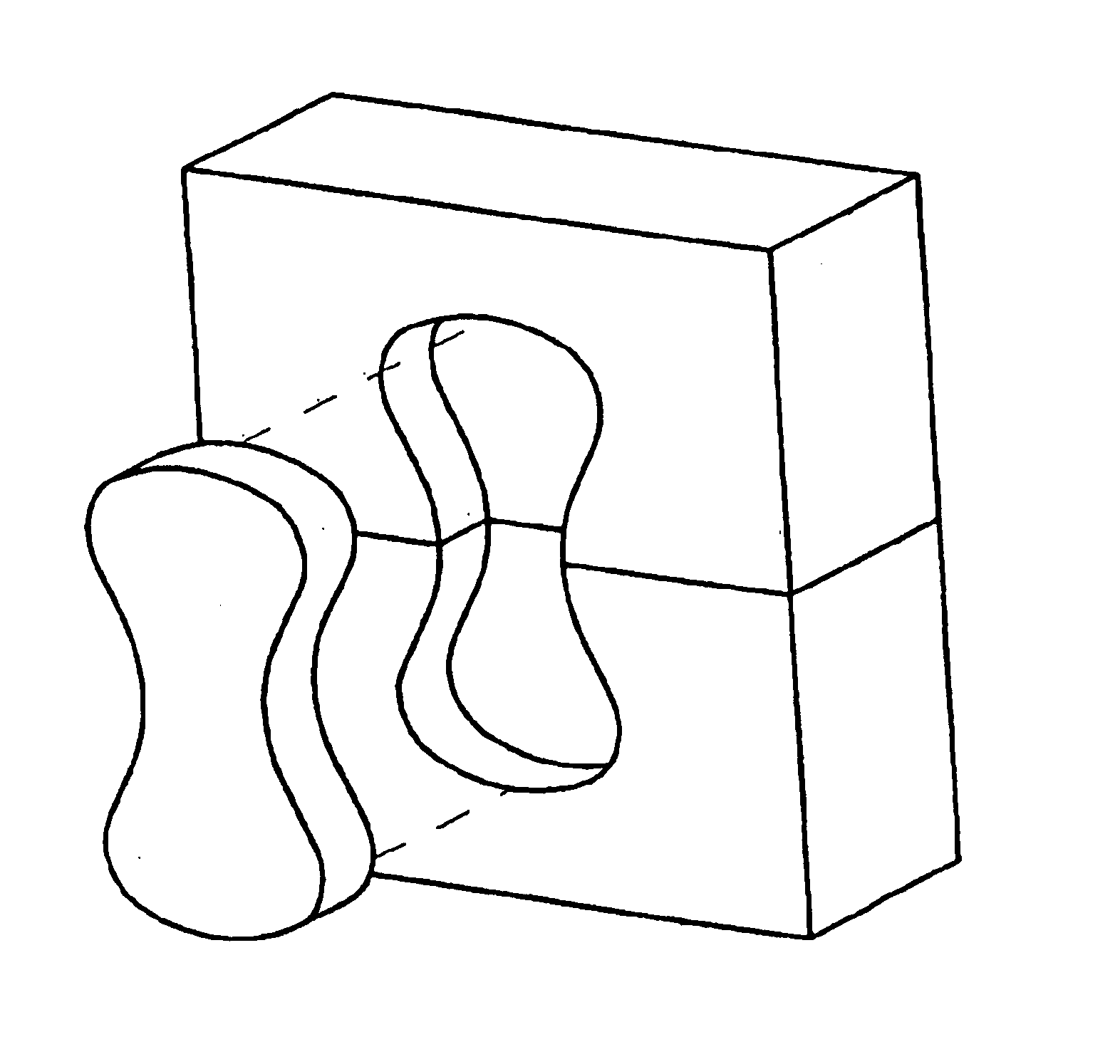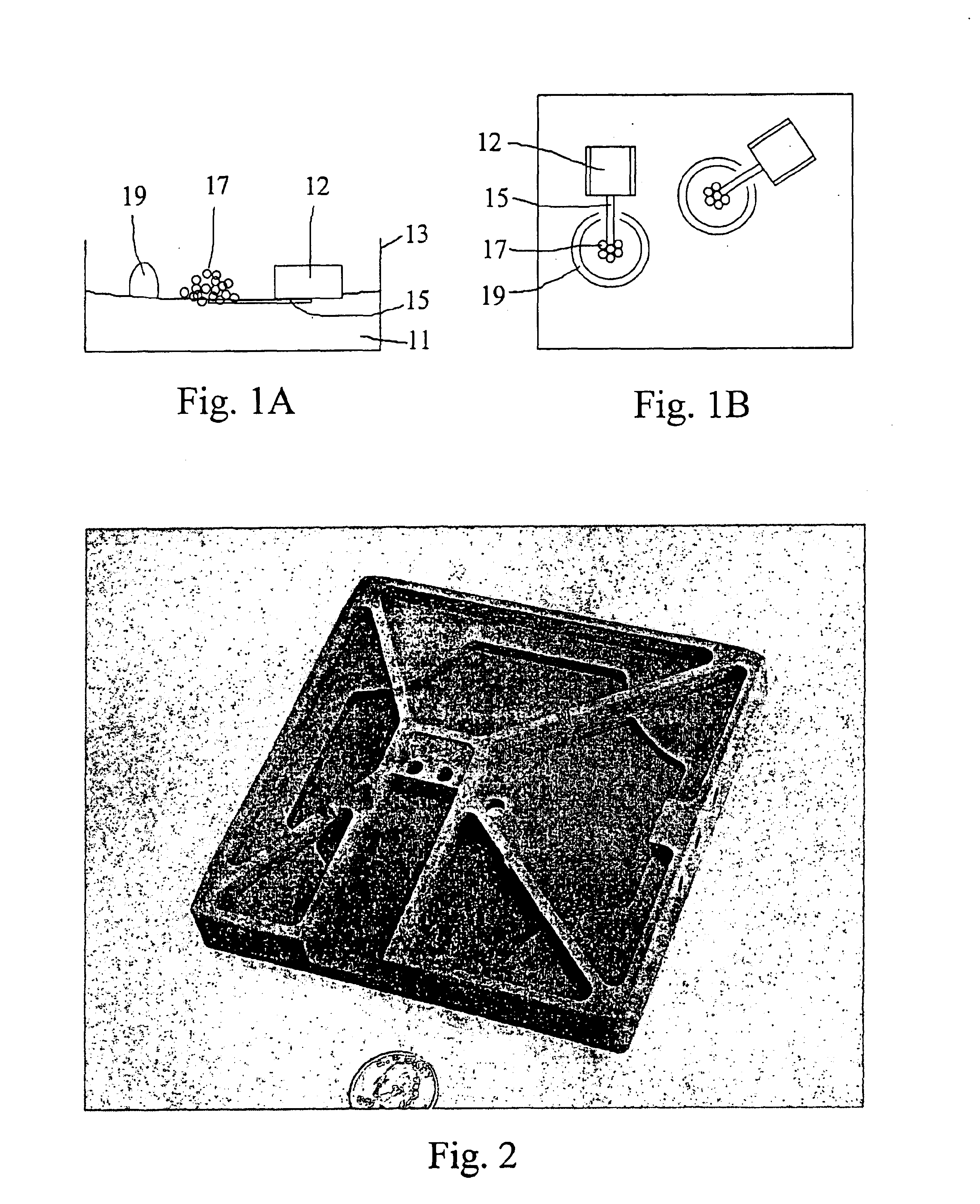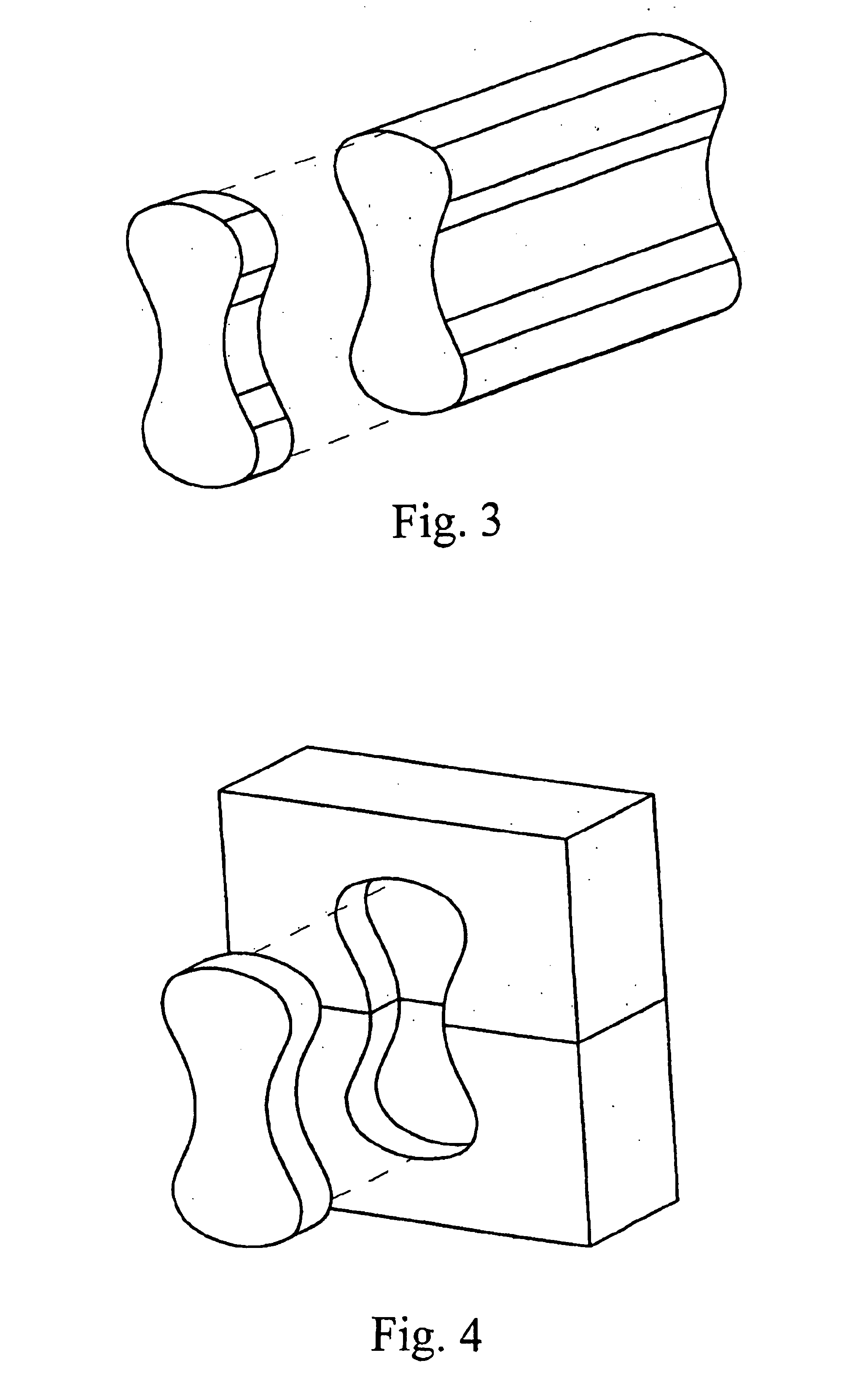Methods for making composite bonded structures
a composite material and bonding technology, applied in the field of composite materials and the infiltration method for producing the same, can solve the problem of weak bonding condition of the subunits
- Summary
- Abstract
- Description
- Claims
- Application Information
AI Technical Summary
Benefits of technology
Problems solved by technology
Method used
Image
Examples
example 1
This example demonstrates the fabrication of a silicon carbide composite “U channel” featuring a multi-constituent infiltrant phase.
Preforms were prepared by a sedimentation casting process. Specifically, about 25 parts of liquid were added to 100 parts of CRYSTOLON blocky (regular), green silicon carbide (St. Gobain / Norton Industrial Ceramics, Worchester, Mass.) and 8 to 12 parts of KRYSTAR 300 crystalline fructose (A.E Staley Manufacturing Co., Decatur, IL) to make a slurry. The silicon carbide particulate consisted of about 70 parts by weight of Grade F 240 (median particle size of about 44 microns) and the balance Grade F 500 (median particle size of about 13 microns). The solids and liquids were added to a plastic jar and roll mixed for about 40 hours. The slurry was de-aired in about 760 mm of vacuum for about 5 minutes. About 15 minutes prior to casting, the slurry was re-roll mixed to suspend any settled particulates.
A graphite support plate was placed onto a vibration table...
example 2
This example demonstrates the fabrication of a silicon carbide composite air bearing support frame featuring a multi-constituent infiltrant phase. This example also demonstrates the fabrication of a relatively complex composite body by way of making a bonded assemblage of smaller preform subunits, and then infiltrating the assemblage.
An air bearing support frame preform was fabricated in two longitudinal sections using substantially the same sediment casting slurry as was described in Example 1. Following sedimentation casting and freezing, the preform halves were dried to a temperature of about 150 C, with a carefully controlled heating up to this temperature to avoid cracking the parts due to the potential for excessive water vapor generation. The preform halves were then additionally thermally processed in a nitrogen atmosphere substantially in accordance with the heating described in Example 1 to pyrolyze the fructose binder to carbon. The preforms could then be green machined.
A...
example 3
An air bearing support frame measuring about 120 mm square and about 19 mm in height was fabricated substantially along the lines described in Example 2 except that bonding of the two pieces was not carried out until after each piece had been infiltrated with silicon-aluminum alloy to form a reaction bonded silicon carbide composite part.
FIG. 2 shows the more complex-shaped piece of the two in the as-infiltrated condition.
PUM
| Property | Measurement | Unit |
|---|---|---|
| Fraction | aaaaa | aaaaa |
| Fraction | aaaaa | aaaaa |
| Electric charge | aaaaa | aaaaa |
Abstract
Description
Claims
Application Information
 Login to View More
Login to View More - R&D
- Intellectual Property
- Life Sciences
- Materials
- Tech Scout
- Unparalleled Data Quality
- Higher Quality Content
- 60% Fewer Hallucinations
Browse by: Latest US Patents, China's latest patents, Technical Efficacy Thesaurus, Application Domain, Technology Topic, Popular Technical Reports.
© 2025 PatSnap. All rights reserved.Legal|Privacy policy|Modern Slavery Act Transparency Statement|Sitemap|About US| Contact US: help@patsnap.com



